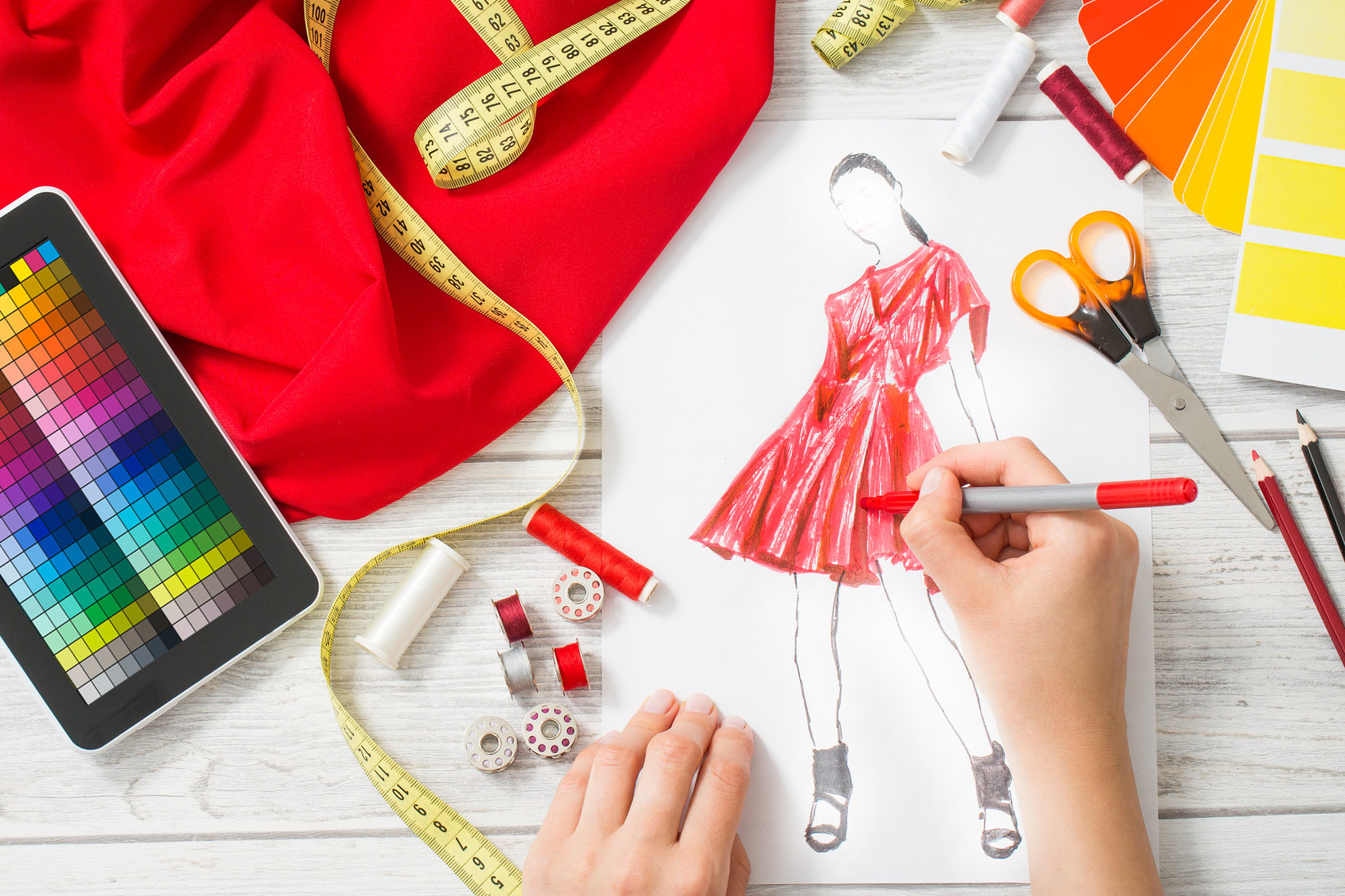A Guide to Stunning Design Techniques for Beginners
This beginner's guide explores essential fashion design techniques with a focus on vector artwork. Learn how to create scalable patterns, precise sketches, and vibrant color palettes while mastering tools like Adobe Illustrator to elevate your designs

Fashion design is a canvas for creativity, and for beginners, understanding the tools and techniques is vital to crafting designs that stand out. One of the most powerful and versatile tools in modern fashion design is vector artwork. This digital art form not only enhances precision but also allows designers to create scalable, editable designs that retain their quality across various mediums. Let’s explore some essential fashion design techniques and how vector artwork fits into the picture.
The Role of Vector Artwork in Fashion Design
Vector artwork is a cornerstone of contemporary fashion design, enabling designers to bring their visions to life with crisp, scalable graphics. Unlike raster images, which can lose quality when resized, vector files maintain their sharpness. This capability is particularly beneficial for designing intricate patterns, logos, and garment details that require precision and flexibility.
Fashion designers often use software like Adobe Illustrator or CorelDRAW to create vector graphics. These programs provide tools to craft seamless patterns, detailed illustrations, and even technical sketches used in garment production. As a beginner, mastering vector artwork can open up a world of possibilities in creating unique and professional designs.
Sketching Your Ideas with Precision
Every great design starts with an idea, and sketching is the initial step in bringing that idea to life. Traditional sketching is a valuable skill, but incorporating digital tools for vector artwork can elevate your designs. With vector software, you can transform rough sketches into polished illustrations. This step also allows you to experiment with shapes, colors, and proportions without the limitations of traditional mediums.
Vector tools like the pen and shape tools make it easy to draw precise outlines and curves, essential for creating accurate garment designs. You can also layer your sketches to explore various iterations without losing the original concept.
Creating Seamless Patterns and Textures
Patterns and textures are integral to fashion design, adding depth and personality to garments. Vector artwork excels in this domain, offering the ability to create seamless, repeatable patterns that can be applied to fabrics. Whether it’s a floral motif, geometric shapes, or abstract designs, vector graphics ensure that the pattern remains consistent and sharp, regardless of the fabric size.
Learning how to use vector grids and alignment tools can help you maintain symmetry and balance in your patterns. Additionally, many vector design programs allow you to preview how a pattern will look when repeated, giving you a clear idea of its final appearance.
Choosing the Right Color Palettes
Color is a powerful tool in fashion design, setting the tone and mood of a collection. Vector software offers advanced color manipulation tools, enabling you to experiment with hues, gradients, and transparency. Using the color wheel and swatch libraries in vector programs, you can create harmonious palettes that align with your design vision.
For beginners, understanding color theory is crucial. Complementary, analogous, and triadic schemes are just a few approaches to creating visually appealing designs. Vector artwork allows you to test these combinations easily and make adjustments without starting from scratch.
Integrating Typography in Fashion Design
Typography is not just for graphic design; it plays a significant role in fashion, especially for branding and promotional materials. Whether it’s a slogan on a T-shirt or a logo for your fashion label, vector artwork ensures that text remains sharp and legible at any size. Experimenting with typefaces, letter spacing, and alignment can help you find the perfect typographic style for your designs.
Preparing Your Designs for Production
Once your design is complete, preparing it for production is the next step. Vector artwork simplifies this process by providing scalable and editable files that manufacturers can easily work with. Formats like AI, EPS, and SVG are commonly used in the industry for printing and fabrication.
Vector graphics are also essential for creating technical drawings, which serve as blueprints for garment production. These drawings include detailed measurements, stitch types, and fabric specifications, ensuring that your vision is accurately translated into the final product.
Staying Updated with Trends and Tools
Fashion is an ever-evolving industry, and staying updated on trends and tools is crucial for beginners. Follow fashion blogs, attend workshops, and explore tutorials on vector artwork to enhance your skills. Social media platforms like Instagram and Pinterest are excellent sources of inspiration, showcasing how designers are incorporating vector techniques into their work.
Building Your Portfolio
As a beginner, building a portfolio is essential for showcasing your skills and attracting potential clients or employers. Include a variety of designs that highlight your proficiency in vector artwork, from intricate patterns to complete garment illustrations. A well-organized portfolio demonstrates your versatility and commitment to the craft.
Conclusion
Fashion design is a journey of continuous learning and innovation. For beginners, mastering vector artwork is a game-changer, offering tools and techniques that enhance creativity and precision. By integrating vector graphics into your design process, you can create stunning, professional-quality designs that leave a lasting impression. Embrace the possibilities of vector artwork, and watch your fashion design skills flourish.












